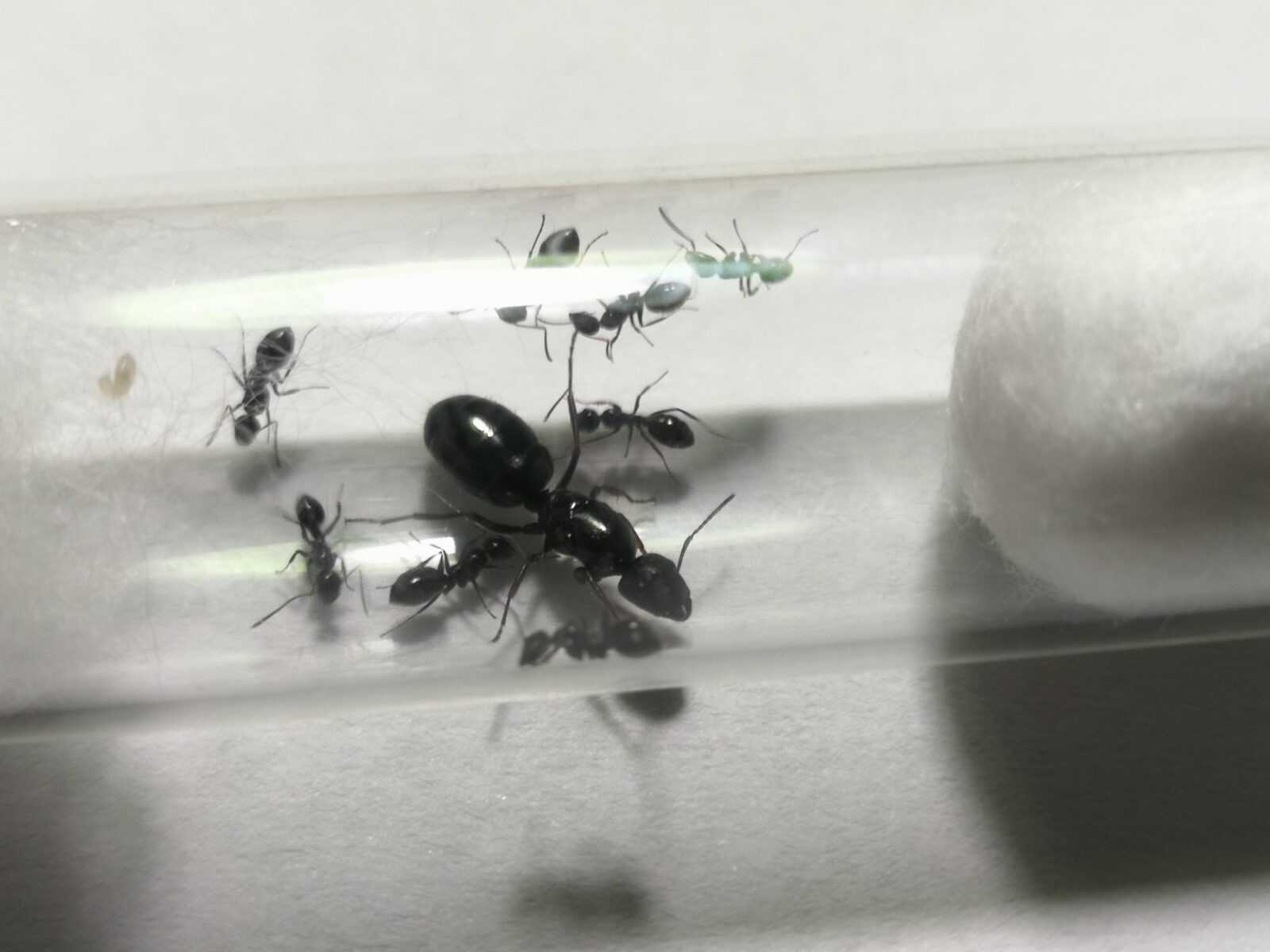Camponotus piceus – Black carpenter ant
Colony Information
Colony type: Monogyny
Colony size: Up to 1000 workers
Development rate: Medium
Physical Characteristics
Size:
- Queen: 8-10mm
- Workers: 3-5mm
- Major workers: 7-8mm
Color: Glossy black
Nutrition
Recommended Food:
- Food insects (Cockroaches, crickets)
- Syrup (Water / Honey with water ratio 4:1/3:1/2:1)
- Fruit
- Vegetables
- Jelly
- Cooked chicken without salt
Environment
Arena humidity: 30-50%
Nests humidity: 50-60%
Arena temperature: 18-28 °C
Nests temperature: 20-24 °C
Species Features
Species behavior: Camponotus piceus are known for their cautious and secretive nature. When faced with danger, they withdraw without panicking.
Recommended Nests
Suitable nest materials:
- Acrylic
- Cork
- Plaster
- Aerated concrete
- Wooden
About Camponotus piceus – Black Carpenter Ants
The Camponotus piceus, also known as the black carpenter ant, is a fascinating species of ant. Here is everything you need to know about these intriguing creatures.
Colony Information
Black carpenter ants belong to the monogyny colony type, meaning there is only one queen in a colony. The colony size can reach up to 1000 workers, indicating a strong and thriving community. They have a medium development rate, allowing for steady growth and expansion.
Physical Characteristics
The size of a black carpenter ant queen ranges from 8 to 10mm, while the workers are smaller, measuring between 3 to 5mm. The major workers, responsible for specialized tasks within the colony, are slightly larger, measuring 7-8mm. These ants have a distinctive glossy black color, which adds to their uniqueness.
Nutrition
When it comes to their diet, black carpenter ants have a varied palate. They primarily feed on food insects like cockroaches and crickets, which provide essential protein. Additionally, they enjoy consuming syrup made from a combination of water and honey. This can be prepared in ratios of 4:1, 3:1, or 2:1 to suit their preferences. Fruits, vegetables, jelly, and cooked chicken without salt are also welcomed food sources for these ants.
Environment
Creating the ideal environment is crucial for the well-being of black carpenter ants. In the arena where they thrive, maintaining a humidity level of 30-50% is recommended. For their nests, a slightly higher humidity of 50-60% ensures their comfort. Temperature is another important factor to consider. The arena should be maintained at a temperature range of 18-28 °C, while the nests should have a more stable temperature between 20-24 °C.
Species Features
Camponotus piceus, or black carpenter ants, are known for their cautious and secretive behavior. They are extremely attentive to their surroundings and quickly withdraw in the face of danger. Unlike other ants that may panic or scatter, black carpenter ants exhibit a composed and strategic response when threatened.
Recommended Nests
Creating a suitable nesting environment is vital for the successful breeding and development of black carpenter ants. The following materials are recommended for nest construction: acrylic, cork, plaster, aerated concrete, and wooden. These materials provide a safe and conducive space for the ants to establish their colony.
Conclusion
The black carpenter ant, Camponotus piceus, is an intriguing species that captivates with its unique characteristics. From their monogynous colony structure to their glossy black appearance, these ants stand out in the insect world. By providing them with an environment that meets their specific needs and offering a diverse diet, you can ensure their well-being and observe their fascinating behavior firsthand. Create a suitable nest for breeding using recommended materials, and you’ll have the opportunity to witness the growth and development of the black carpenter ant colony.


















Reviews
There are no reviews yet.